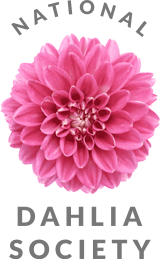The Dahlia has been in Europe for over two hundred years. It came from Mexico to the Botanical Gardens in Madrid towards the end of the eighteenth century and was named by Abbe Cavanille in honour of Andreas Dahl, Swedish scientist come environmentalist.
The initial named species imported into Europe were Dahlia pinnata, Dahlia rosea and Dahlia coccinea. The first dahlias grown outside of Madrid were single (open-centred) & Multi-ray open centre, pendant stems, but it was not long before the horticultural growers of the day discovered the Dahlia was a natural hybrid and when grown from seed, it readily changed its form and colour, so that today we have a range of Dahlia types that offer something to please everyone.
Today, there are cultivars in the form of the waterlily, the paeony, the orchid, the chrysanthemum and the anemone, to say nothing of the main formations like the decorative (flat, broad petals), the cactus and semi-cactus types (rolled, pointed petals) and the ball forms (globular flowers) that have as their smallest relative the popular Pompon Dahlias that beguile so many gardeners.
There is every colour and colour combination to choose from, except the elusive blue (which we are still seeking) which is covered by the wide range of violet and mauve cultivars. Sizes range from the smallest types, called Topmix or Lilliput Dahlias to the giants that have blooms over a foot in diameter carried on powerful stems.
You can learn so much more about the dazzling world of the Dahlia by becoming a member of the National Dahlia Society.
